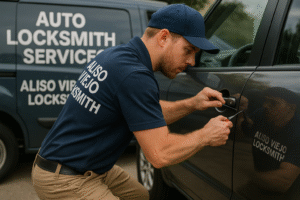
The Best Dove Hunting Tips for Left-Handed Shooters
Dove hunting requires precision, quick reflexes, and the ability to adapt to changing flight patterns. Left-handed shooters often face unique challenges, as most firearms and hunting equipment are designed for right-handed users. Adjusting to these difficulties involves selecting the right firearm, refining shooting techniques, and positioning correctly in the field. When a left-handed hunter develops a strategic approach, it enhances accuracy and efficiency, resulting in a more rewarding experience.
Shotguns designed for left-handed shooters come with reversed ejection ports and safeties, reducing distractions during critical moments. If a left-handed hunter uses a right-handed firearm, shell ejections can disrupt focus and impact accuracy. Choosing a firearm tailored to left-handed needs ensures a smoother experience and minimizes interference when tracking doves. Along with the right shotgun, understanding shooting angles and stances becomes crucial. Adjusting positioning to accommodate natural movement can significantly improve shot placement and reaction time.
Right Gear for a Left-Handed Hunter
The right equipment significantly impacts a left-handed shooter’s success in the field. Opting for a shotgun with a left-handed stock design enhances comfort and improves shooting consistency. When a left-handed hunter selects the appropriate firearm, it provides better shoulder alignment and smoother recoil control. Selecting gear suited for left-handed operation reduces unnecessary adjustments, allowing a hunter to focus entirely on targeting doves.
A properly fitted shotgun ensures better alignment with the dominant eye, a crucial aspect of accuracy in dove hunting. Since left-handed shooters rely on their left eye for tracking, ensuring the firearm aligns correctly with their line of sight enhances precision. Shooting glasses with an anti-glare coating help improve visibility by reducing sun interference, especially during early morning or late evening hunts. Additionally, left-handed vests with accessible shell pockets streamline the reloading process, keeping necessary supplies within reach without fumbling.
Refining Shooting Techniques
Developing effective shooting techniques is essential for left-handed hunters aiming to improve their performance. Proper stance and body positioning allow a shooter to react swiftly when doves change direction mid-flight. Placing the left foot slightly forward while maintaining a firm grip on the shotgun improves stability and control. A balanced stance ensures smoother follow-through and prevents unnecessary adjustments that can disrupt accuracy.
Consistent practice with a clay target system trains muscle memory and improves reaction time, leading to more successful shots during an actual hunt. Left-handed shooters should pay attention to their mounting technique, ensuring the shotgun is naturally raised to the shoulder without hesitation. A well-executed mount allows for a quick sight picture and precise target acquisition. Understanding lead distance remains vital, as doves move unpredictably. Practicing lead adjustments based on speed and distance enhances the ability to make clean, ethical shots.
Positioning and Field Strategies
Positioning plays a crucial role in dove hunting success, especially for left-handed shooters adjusting to different shooting angles. When setting up in a hunting field, choosing a spot that minimizes obstructions to the left side ensures an unobstructed shooting range. Setting up in an open area with good visibility helps track doves effectively without interference. A left-handed hunter should also consider wind direction, as it influences the flight paths of doves.
When hunting in a group, positioning on the left side of right-handed shooters prevents unintentional crossing of shooting lanes. This setup ensures that each hunter maintains a safe and efficient shooting angle. A left-handed shooter benefits from positioning near tree lines or brush edges where doves frequently land, offering better shot opportunities. Field awareness remains essential, as it allows a hunter to anticipate dove movement and adjust shooting angles accordingly. By analyzing movement patterns and utilizing natural cover, a left-handed shooter maximizes shooting opportunities and improves overall efficiency.
Hunting Strategies for Different Environments
Hunting doves in varying terrains requires flexibility and adaptation, particularly for left-handed hunters navigating different shooting conditions. Open fields demand quick reflexes and fast target acquisition, while wooded areas require precise shooting through limited openings. Understanding the landscape allows a hunter to make necessary adjustments that enhance shooting success.
In regions where turkey and dove hunting overlap, many hunters seek comprehensive knowledge on various game species. A well-informed hunter benefits from resources like a turkey hunting guide, which offers valuable insights on terrain adaptation, scouting techniques, and seasonal patterns. Applying similar strategies in dove hunting improves decision-making, particularly when adjusting shooting stances or selecting hunting locations.
A left-handed hunter benefits from training exercises that simulate real hunting conditions, enhancing their ability to adapt quickly. Practicing in diverse environments improves confidence and ensures better performance when facing unpredictable flight patterns. As a hunter refines shooting skills and adapts positioning techniques, their overall success rate in dove hunting increases significantly.
Final Words
Left-handed shooters face unique challenges in dove hunting, but the right strategies and equipment significantly improve performance. Choosing a firearm designed for left-handed operation enhances comfort and accuracy, while proper stance and positioning maximize shot effectiveness. Field awareness and adaptability ensure a smooth experience, allowing a hunter to react efficiently to changing conditions. By refining techniques and practicing in varied environments, left-handed shooters enhance their dove hunting skills and achieve greater success in the field.







